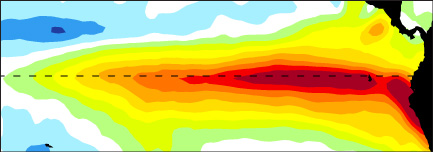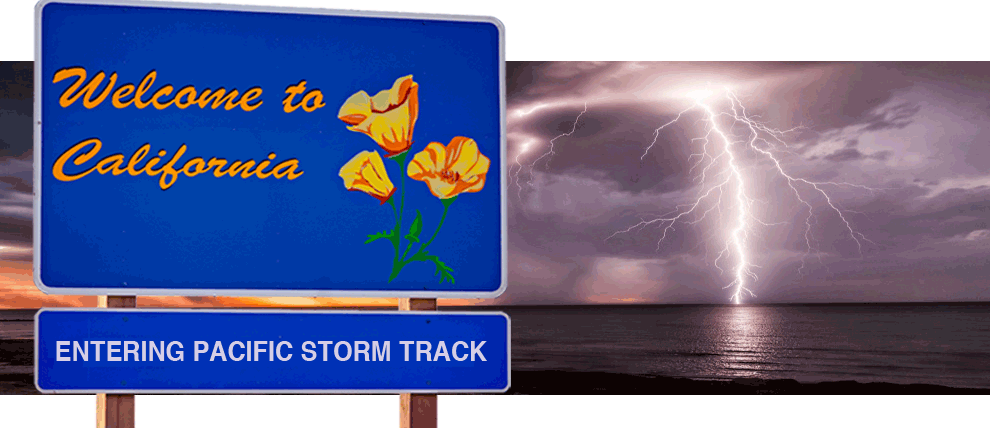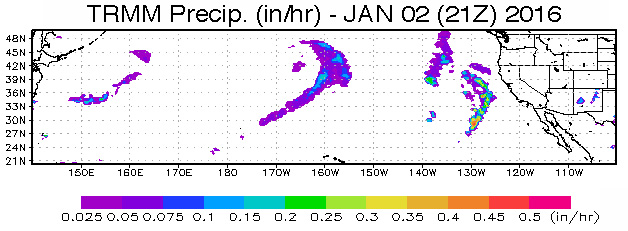Although the origin of El Niño lies in the tropical Pacific Ocean, its effects are felt over a large portion of the Earth. These remote effects are called teleconnections (from the Ancient Greek tele, meaning distant).
 The ocean and atmosphere are always in a perpetual tug of war, trying to balance out disturbances and come to a place of equilibrium. This is achieved by wave action. Imagine a drop of water added to the middle of a bucket of water. The depth of the water increases on the whole; it does not increase solely at the point where the drop landed. The change in height for the whole is achieved by wave action. In the case of the atmosphere, which behaves like a fluid, we speak in terms of the height of the pressue levels the centers of which are called high and low pressure systems as seen in the animation below and which are the mechanisms which transmit the teleconnections.
The ocean and atmosphere are always in a perpetual tug of war, trying to balance out disturbances and come to a place of equilibrium. This is achieved by wave action. Imagine a drop of water added to the middle of a bucket of water. The depth of the water increases on the whole; it does not increase solely at the point where the drop landed. The change in height for the whole is achieved by wave action. In the case of the atmosphere, which behaves like a fluid, we speak in terms of the height of the pressue levels the centers of which are called high and low pressure systems as seen in the animation below and which are the mechanisms which transmit the teleconnections.
The ocean surface affects the air above it through the transfer of energy. In the tropics, there is a vast amount of energy associated with warm water--enough to affect the entire column of air from the surface to the top of the weather-making part of the atmosphere (this is approximately around 10 kilometers height or above, or a little more than 6 miles in altitude, which is about the cruising altitude for many commercial jets).
As the warm water shifts location during El Niño, convection and precipitation changes. This warms the tropical atmosphere up until about 10 kilometers height and causes high atmospheric pressure to form on either side of the equator. These pressure changes spread like waves through the atmosphere, and this leads to changes in the winds high up in the atmosphere. These winds, referred to as jets, are vital in steering storms. When the winds change, the path of the storms will also change.
To see how shifts in the jet stream affect precipitation in North America and California in particular, go to our California connection page.




